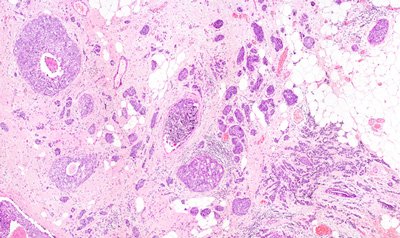GlyRS identified as a possible new breast cancer drug target
Posted: 27 June 2016 | Victoria White, Digital Content Producer | No comments yet
Scientists have identified a protein, called GlyRS, that launches cancer growth and appears to contribute to higher mortality in breast cancer patients…


Scientists at The Scripps Research Institute (TSRI) have identified a protein, called GlyRS, that launches cancer growth and appears to contribute to higher mortality in breast cancer patients.
The new findings suggest that future therapies might target GlyRS to halt cancer growth.
“We have potentially found an important target for anti-cancer treatment,” said TSRI Professor Xiang-Lei Yang, who led the study.
The new study reveals that the protein is actually a double agent – in addition to its biologically essential role in making proteins, it can help to further modify proteins in a way that launches cancer growth.
The researchers found that overexpression of GlyRS may lead to too little p27 – a protein that Yang compared to a stop sign for cell growth.
Specifically, the team found that GlyRS creates a protective shield around a modifier protein, called NEDD8, and safely “chaperones” it to meet its target protein, called cullin. With NEDD8 in place, cullin is activated to degrade p27.
p27 gets degraded when GlyRS levels increase
Kept at the right levels, p27 regulates the cell cycle, stopping potential cancer growth. But when GlyRS levels increase, too much p27 gets degraded and cells multiply unchecked.
“Cancer cells hijack and over-exaggerate the system,” explained TSRI Research Associate Zhongying Mo. “This can lead to tumourigenesis.”
This process is especially dangerous given GlyRS’s additional function in protein synthesis, which supplies cancers with the proteins they need to keep growing.
When Mo analysed data from a breast cancer tissue database, she found that patients with increased GlyRS had higher mortality.
Although this research is at the basic stage, the team believes it could guide future cancer diagnostics and therapies. For example, measuring GlyRS may provide a marker to help doctors predict how quickly a patient’s cancer might progress.
The team now plans to study the effects of GlyRS in different types of cancer and the possibility of developing a drug to inhibit GlyRS.
Related topics
Drug Targets
Related conditions
Breast cancer
Related organisations
The Scripps Research Institute (TSRI)



